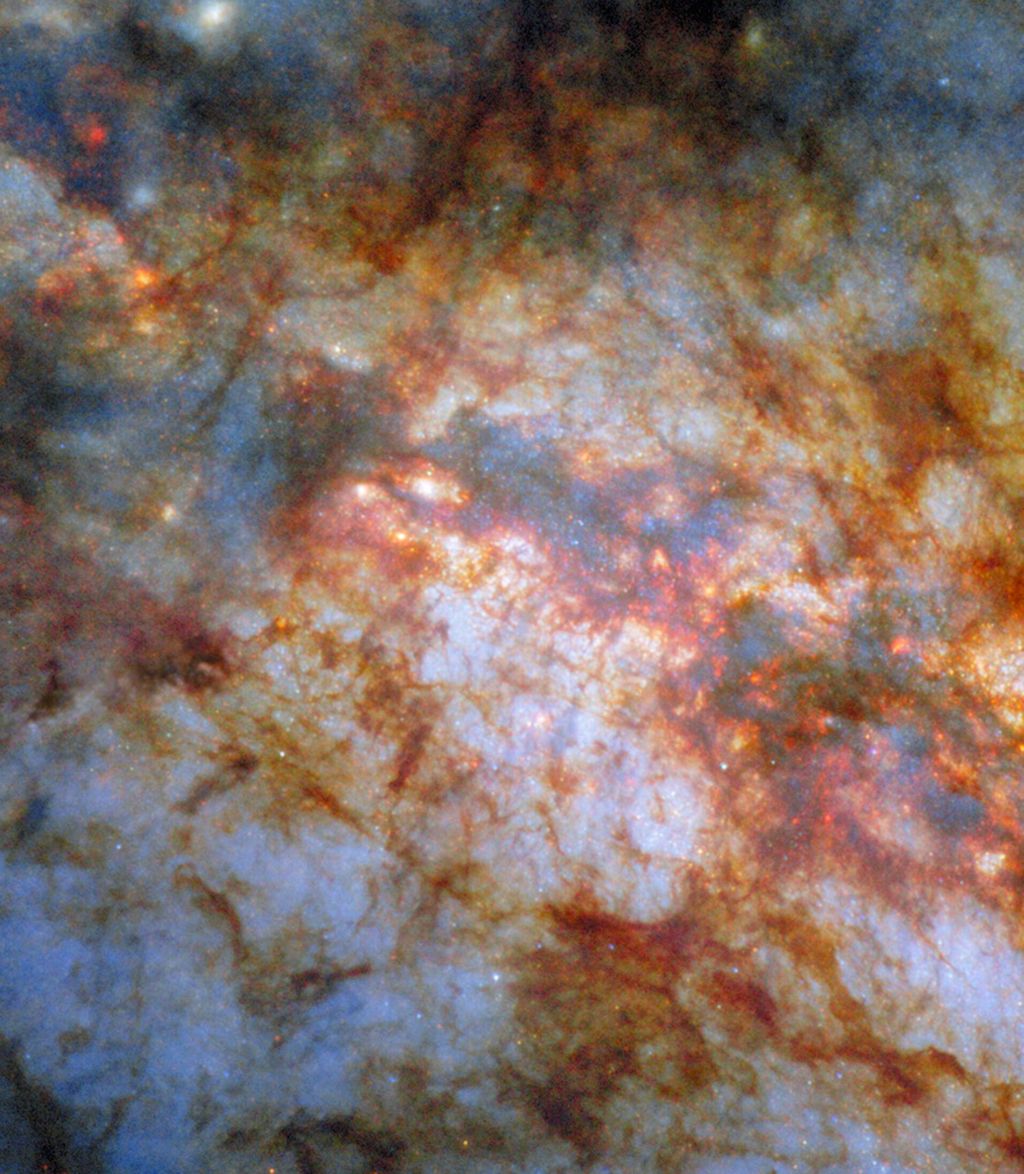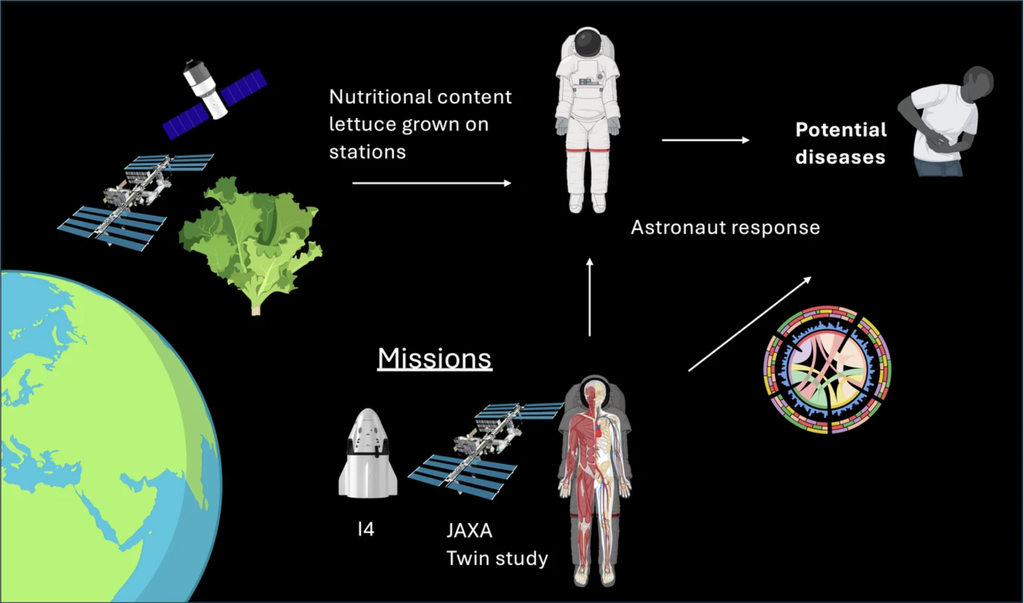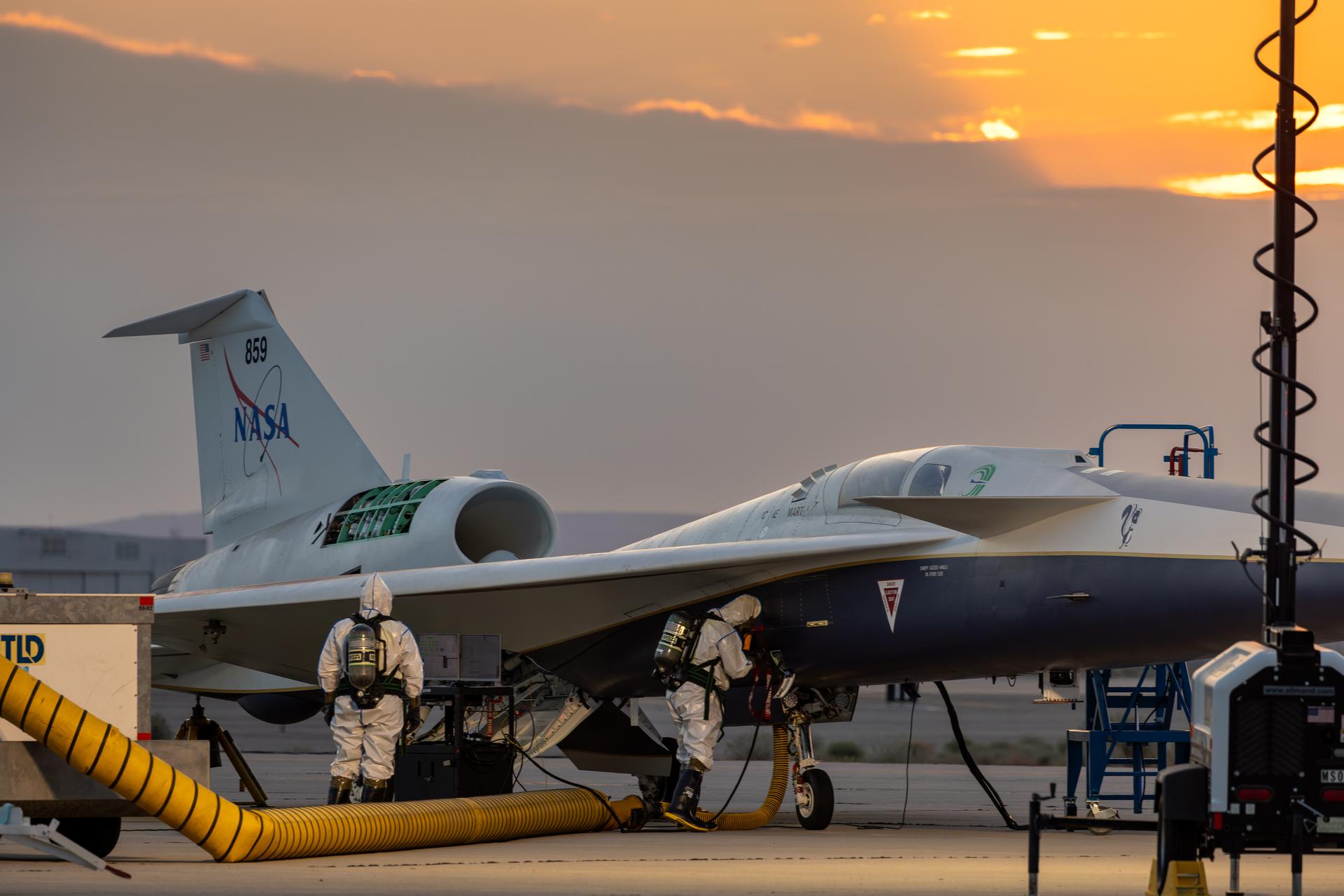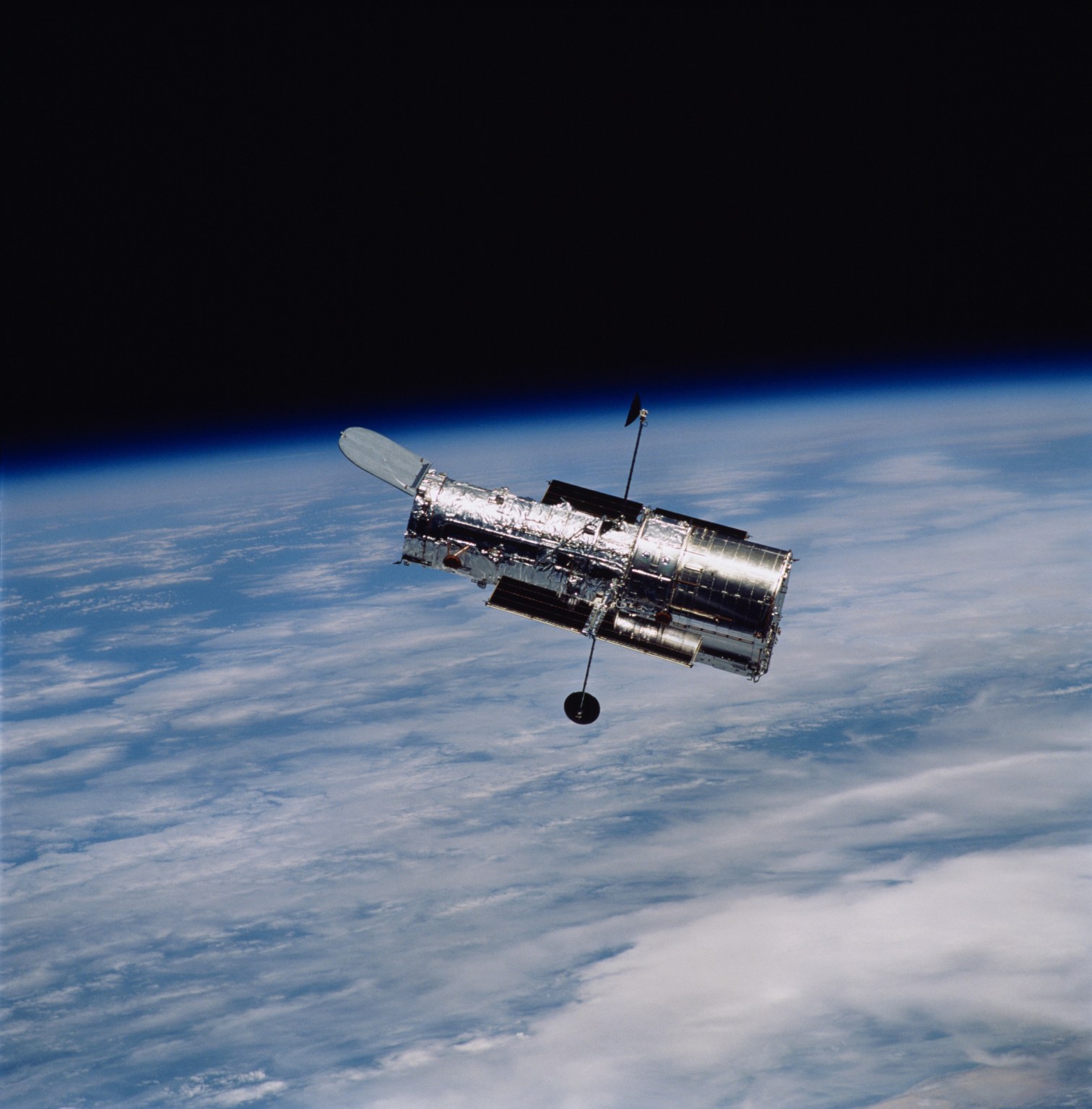1 min read
Distant Galaxy Identification Technique in Hubble Field

Series of four panels that illustrate the distant-galaxy identification technique. Four panels that show (top to bottom, or right to left when rotated correctly) F814W filter, F606W filter, F450W filter, and F300W filter images, or near-infrared through near-ultraviolet images. The identified galaxy is prominent in the near-infrared image but totally absent in any of the other images. It is this spectroscopic signature that identifies this galaxy as a very distant object.
About the Object
- R.A. PositionR.A. PositionRight ascension – analogous to longitude – is one component of an object's position.12h 36m 48.26s
- Dec. PositionDec. PositionDeclination – analogous to latitude – is one component of an object's position.62° 13' 1.99"
- Object NameObject NameA name or catalog number that astronomers use to identify an astronomical object.HDF-N
- Release DateJune 26, 1996
- Science ReleaseFindings from Hubble Deep Field Hone in on Distant Galaxies
- Credit
Related Images & Videos
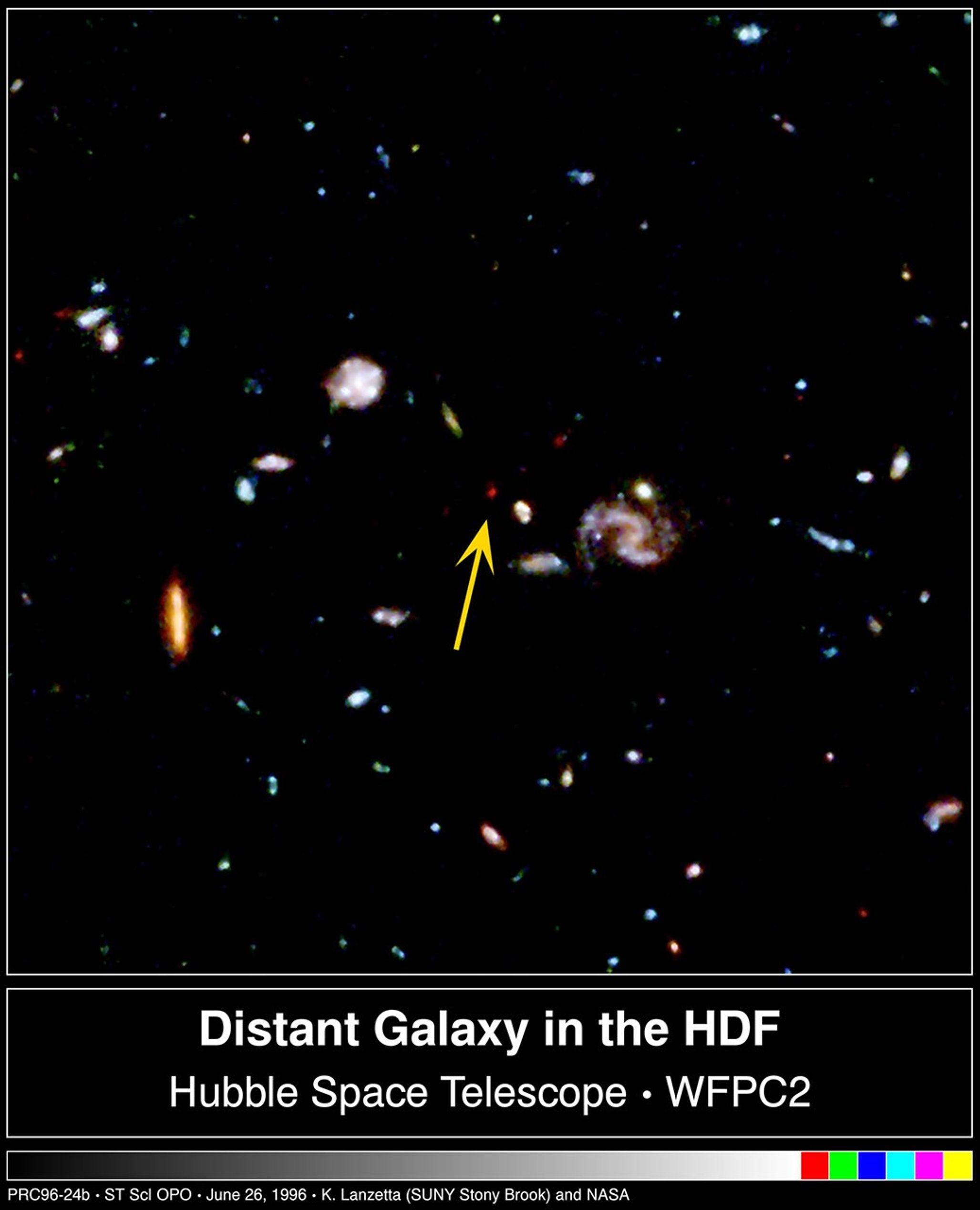
Image of a Distant Galaxy Candidate in the Hubble Deep Field
Small portion of the Hubble Deep Field image - the deepest view of the universe taken with NASA's Hubble Space Telescope. Arrow points to a very faint galaxy that appears to be more distant than any known previously. Other galaxies in the image are at smaller distances.
Share
Details
Last Updated
Aug 17, 2025
Contact
Media
Claire Andreoli
NASA’s Goddard Space Flight Center
Greenbelt, Maryland
claire.andreoli@nasa.gov




